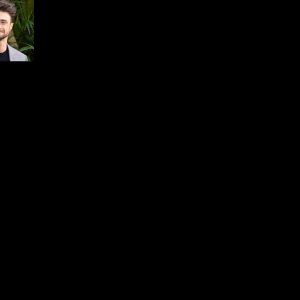GAL GADOT CAST AS THE EVIL QUEEN IN DISNEY’S “SNOW WHITE” LIVE-ACTION REMAKE — FANS ARE SHOOK!
It’s official — Gal Gadot is ditching her tiara as Wonder Woman for a poison apple! The Israeli actress and global superstar is confirmed to play the one and only Evil Queen in Disney’s upcoming live-action remake of Snow White — and we are living for it!
After dominating the big screen as the iconic superhero in DC’s Wonder Woman franchise, Gadot is taking a fabulously wicked turn as Disney’s original villainess. The casting news has sent shockwaves through Hollywood and social media, with fans buzzing about this unexpected — and totally genius — role swap.
FROM HERO TO VILLAIN: GAL GADOT’S NEW ERA
You know her. You love her. You fear her now?
Best known for slaying it (literally and figuratively) as Diana Prince in Warner Bros’ billion-dollar Wonder Woman films, Gal Gadot is taking on a dramatically different vibe with the Evil Queen — Snow White’s glamorous but hell-bent antagonist, obsessed with being “the fairest of them all.”
The casting choice is all kinds of iconic. Let’s be honest: If anyone can serve queen energy, high fashion, and lethal elegance, it’s Gal Gadot. Between her commanding screen presence, international fanbase, and edgy red-carpet style, Gadot is the ultimate choice to breathe new (and sinister) life into one of Disney’s most legendary villains.
DISNEY’S LIVE-ACTION UNIVERSE STRIKES AGAIN
Disney is clearly not slowing down with its live-action reimaginings. Following the massive success of Beauty and the Beast, Aladdin, The Lion King, and most recently The Little Mermaid, the studio is ready to give 1937’s Snow White — the very first full-length Disney animated feature — a modern makeover.
Helmed by director Marc Webb (The Amazing Spider-Man) and produced by Marc Platt (La La Land, Wicked), this remake promises to be a bold, cinematic revival of the classic fairy tale. And while fans are eagerly waiting to see who will portray Snow White, it’s safe to say that all eyes are currently on Gal Gadot’s wicked transformation.
WHAT GAL SAID ABOUT PLAYING THE EVIL QUEEN
In interviews, Gadot has hinted at how thrilled she is to embrace her darker side. “It’s very different from anything I’ve done before,” she said. “It’s deliciously evil. There’s so much fun to be had, and I get to sing, too!” That’s right — we’re getting singing Gal Gadot!
While the actress has previously showcased her charisma and strength as a warrior-princess, stepping into the Evil Queen’s throne allows her to channel a sultry, sinister allure — complete with magical powers, an epic costume wardrobe, and plenty of on-screen drama.
LET’S TALK VILLAINS: EVIL QUEEN GLOW-UP?
The Evil Queen was Disney’s OG villain. She stalked girlboss energy decades before it was cool. Dripping in dramatic capes and deadly jealousy, this character is a striking symbol of ego and obsession that still resonates today.
But in recent years, fans have embraced villain origin stories — just look at Angelina Jolie’s Maleficent and Emma Stone’s Cruella. These complex, stylish baddies are trendsetters in their own right, giving the traditional fairy tale formula a modern, feminist update.
So will Gadot’s Evil Queen get a similar glow-up? Will there be more depth to her character than just being evil for evil’s sake? We’ll have to wait and see — but one thing’s for sure, Gadot is ready to bring magic, menace, and major drama to the role.
TWITTER, TIKTOK, AND THE INTERNET’S REACTION
When the news dropped, Twitter and TikTok practically exploded. Stan accounts couldn’t get enough of the idea of Gal as Disney’s alpha villain. Tweets like “Gal Gadot as the Evil Queen? That’s the fairest casting of them all!” and “Sorry Snow White, but I’m Team Evil Queen now” started trending immediately.
On TikTok, creators are already imagining what Gadot’s Evil Queen will look like, and posting reaction videos, side-by-side comparisons with the animated original, and dream fantasy edits featuring signature catchphrases like “Magic mirror on the wall…”
With Gen Z and Millennial fans driving the conversation online, the Snow White remake is already shaping up to be a streaming-era sensation.
HERE’S EVERYTHING WE KNOW (SO FAR)
- Gal Gadot has been officially cast as the Evil Queen in Disney’s live-action Snow White remake.
- The film will be directed by Marc Webb and produced by Marc Platt.
- Rachel Zegler (West Side Story) is reportedly cast as Snow White, marking another exciting casting choice for Disney.
- The movie will include new songs from Benj Pasek and Justin Paul, the award-winning duo behind The Greatest Showman and La La Land.
- No official release date yet, but production is expected to begin soon.
FINAL THOUGHTS
Love her or fear her, Gal Gadot is ready to cast a spell on audiences around the world. With her unmatched star power and striking beauty, she’s bound to transform the Evil Queen from an animated villain into a live-action legend.
Will her performance be award-worthy? Is this the beginning of a villainous renaissance for Gadot? One thing’s for sure: this fairy tale just got a dark, dazzling upgrade — and we are HERE for it.
Stay tuned as we follow all the twists and turns of this magical remake. Until then — beware the mirror, and definitely don’t eat that apple.
For all the latest updates on Gal Gadot, Disney live-action news, and Snow White teasers — keep it locked right here.
Keywords: Gal Gadot Evil Queen, Snow White live-action remake, Disney 2024 movies, Gal Gadot villain, Disney remake news, Gal Gadot casting, Disney villains live action, new Snow White movie, Rachel Zegler, Gal Gadot singing Evil Queen.

